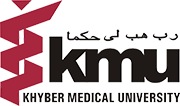MPhil Anatomy
The study of anatomy is akin to the study of language. Literally thousands of new words will be taught throughout the course. Success in anatomy comes from knowing the terminology, the three-dimensional visualization of the structure(s) and using that knowledge in solving problems. The discipline of anatomy is usually studied in multiple approaches. For instance the gross anatomy is mostly dealt with:
- Regional approach - description of structures regionally and their relationships to each other (back, thorax, abdomen, pelvis, perineum, neck, head, upper limb, lower limb)
- Systemic approach - description of the major systems of the body – musculoskeletal, nervous cardiovascular, lymphatic, digestive, respiratory, endocrine, urinary and reproductive
The gross anatomy course is organized around a regional approach to anatomy, but time is taken throughout the course to review information from a systemic standpoint because true understanding requires that both approaches be used. The ultra structural details of the cells and tissues will be studied using a number of micro techniques to make the tissue’s ultrastructure visible under the microscope. Furthermore, the developmental aspects of different structures are studied separately under the domain of developmental anatomy, while the neurological aspects will be discussed during the neurobiology sessions.
As far as the teaching and learning is concerned, each lecture session of the syllabus begins with a list of “Objectives” that identify anatomic structures and concepts to be mastered. The goal of the objectives list is to help students focus study time on required content instead of guessing what the instructor expects them to memorize and learn. Similarly to learning a new language there is a large amount of memorization required. However, the end goal is not in memorizing long lists of terms and verbs but of communicating. Anatomy is much the same. There are long lists of structures and concepts to memorize and learn but that is not the end goal. The end goal is applying the anatomic content to clinical/analytical problems.
The syllabus is meant to help serve as a guide in this study process. The syllabus and associated objectives are meant to serve as a focus to study time. In addition, homework exercises are provided to aid students in applying anatomic concepts in clinical situations to assess self-mastery of anatomic knowledge and to prepare for the end-unit examinations. The following list of objectives is general in nature and encompasses the core ideology behind all the sessions.
Specialty Courses in MPhil Anatomy
This program has two main strands. One is the in-depth study of the anatomy of the human body. Anatomical knowledge will be learned to a level to teach undergraduate and postgraduate students and professions allied to medicine. This part of the course is largely self-directed, with regular tutorials and laboratory sessions. The following speciality courses will be the part of MPhil anatomy degree:
- Developmental anatomy course will consist of aspects related to human embryonic and organ system development with special emphasis on teratology and developmental anomalies.
- Microscopic anatomy course will feature histological aspects of various types of human tissues and different micro techniques associated with cell and tissue processing
- Gross Anatomy of musculoskeletal system (MSK) will consist of Osteology, Myology, Angiology, Neurology, arthrology, syndesmology and associated biomechanics of upper limb, lower limb, vertebral column and head and neck region.
- Viscerology course will consist of gross anatomy of the major organs of the body and their associated neurovascular supply.
- Neurobiology course will feature the anatomical and physiological aspects of nervous system of the human body.
- Journal club sessions will be a part of all the above-mentioned courses. These sessions will encompass the critical appraisal of the published work such as original research and review articles. In addition sessions regarding literature search, literature review, synopsis development and critical review will be carried out.
- In addition students will be taught clinical correlations associated with the corresponding course in the form of applied anatomy.
The other major strand of this degree is anatomy pedagogy, covering the theoretical and practical aspects of teaching anatomy to undergraduate and postgraduate students. Next to theoretical lectures and workshops some emphasis will be given to the teaching of anatomy to medical undergraduate and postgraduate students. Students will be encouraged to prepare and perform teaching sessions in both small and large groups of students. The learned theoretical material, the observations and practical experiences will be compiled in an end-of year teaching portfolio.
curriculum
DownloadInstitutes offering this Program
- KMU Institute of Basic Medical Sciences, IBMS
